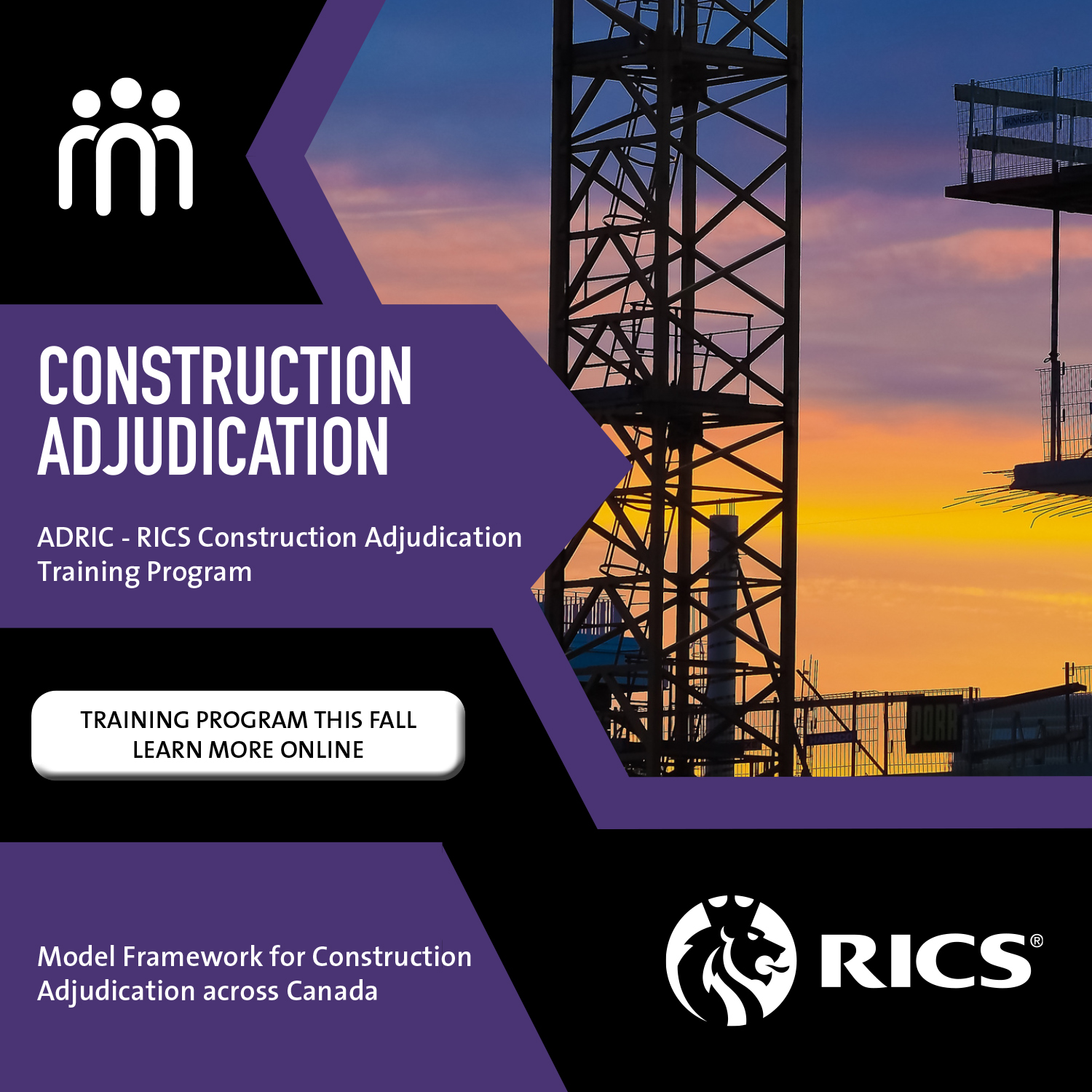
Inclusive Arbitration: Navigating Disabilities with the ICC Guide on Disability Inclusion in International Arbitration and ADR
By Ayodele Akenroye, Ph.D., FCIArb

On October 30, 2023, the International Chamber of Commerce released its ground-breaking resource, the Guide on Disability Inclusion in International Arbitration and ADR (the “Guide”). The release marks a crucial leap forward in fostering the active and meaningful participation of individuals with disabilities in the arbitration industry. In this article, I explore the significance of the Guide and outline actionable steps for Canadian arbitration practitioners to increase inclusivity in arbitration proceedings.
Breaking Down the Guide
The Guide offers comprehensive insights into how we can make international arbitration and ADR more accessible for individuals with disabilities. It strongly emphasizes the importance of accommodating diverse needs to ensure equitable access to justice for all participants. Tailored for arbitration practitioners, institutions, and other stakeholders, the Guide covers various critical aspects including communication, physical access, reasonable accommodations, and leveraging technology to enhance overall fairness and efficacy.
In the world of international arbitration, where intricate legal proceedings unfold, the Guide provides a roadmap for inclusivity. By addressing the multifaceted challenges faced by individuals with disabilities, it endeavours to level the playing field and foster an environment that is not only legally robust but also inherently fair and just.
The Canadian Context
Recent Statistics Canada data reveals that approximately eight million Canadians grapple with at least one disability, a figure that has doubled over the last decade.[1] Most starkly, 72 percent of this demographic encountered barriers to accessibility in the preceding year.[2] These statistics underscore the ubiquity of disability in our society and call for an examination of our practices to ensure that the principles of justice and accessibility extend to all, without exception.
Canadian Arbitration Practitioners: Agents of Change
The Guide encourages Canadian arbitration practitioners to take proactive steps as catalysts for change in arbitration. Here are some practical suggestions tailored for our context:
- Awareness Campaign
Familiarize yourself with the content of the Guide and disseminate its key principles within your organization and professional networks. By initiating an awareness campaign, you contribute to a collective understanding of the importance of disability inclusion in arbitration.
- Training Initiatives
Embrace ongoing training initiatives on disability inclusion and accessibility. Understanding the intricacies of accommodating individuals with disabilities is essential. By investing in education, you equip yourself to navigate the nuances of disability inclusion with finesse.
- Proactive Communication
Initiate proactive communication with participants to recognize and address specific accommodations or support needed for full engagement in the arbitration process. This involves going beyond a one-size-fits-all approach and creating a dialogue that ensures individual needs are both understood and met. By embracing the recommendations from the Guide to make disability inclusion a default point in initial case management conferences, including standardized provisions in the first procedural order for the disclosure of disabilities and accommodation requests, practitioners pave the way for a more inclusive arbitration environment.
- Accessible Hearing Facilities
Ensure that hearing facilities are not only physically accessible but are also equipped with appropriate technology to support individuals with hearing impairments, recognizing that other impairments arising from disabilities may necessitate reasonable accommodations. For instance, a quadriplegic participant could be accommodated through the adoption of a hybrid hearing format or by allowing the attendance of a caregiver. Similarly, a blind person’s participation can be facilitated by attending an in-person hearing with a guide dog, and the evidentiary record rendered machine-readable for text-to-speech software use. Sign-language interpretation should be provided for those who are hearing-impaired or deaf during in-person hearings. Adjustments to the timing or length of sessions may be made to accommodate cognitive impairment, and designated quiet spaces or unscheduled breaks may be granted to participants prone to emotional distress. Flexibility in the hearing schedule without penalty may be allowed for participants facing acute disability-related impairments. If physical access at hearing venues is limited for the mobility-impaired, arrangements for relocation can be made. This comprehensive approach not only removes physical barriers but also embraces a wide range of reasonable accommodations, sending a robust message that everyone’s voice deserves to be heard and accommodated in a fair and inclusive manner.
- Technology Integration
Integrate technology thoughtfully to facilitate communication, offer real-time transcription, and provide various forms of support. In an age where technology is everywhere, its strategic use can significantly improve the involvement of individuals with disabilities in arbitration proceedings. Technology can be a potent tool for inclusivity. Aligning with the Guide’s recommendations, institutions and organizations should evaluate their online presence, including websites and social media, to adhere to best practices for disability inclusion in the service industry, and extend this assessment to digital and telecommunication services, covering telephones, kiosks, applications, and databases. Additionally, arbitral institutions can acquire licenses for optical character recognition and speech-to-text software to reduce or eliminate costs for participants in individual proceedings, further enhancing accessibility. Utilize the insights gained from these evaluations to establish policies ensuring ongoing accessibility and incorporate relevant references to disability in diversity discussions, fostering a genuinely inclusive environment.
By embodying the recommendations, Canadian arbitration practitioners assume a proactive role in creating a more inclusive and equitable environment for individuals with disabilities participating in international arbitration and ADR. This is not just about compliance; it is about weaving inclusivity into the fabric of our professional practices.
Conclusion
The Guide provides not just a set of guidelines but a roadmap for recalibrating our approach to arbitration considering the diverse needs of participants.
By embracing the principles and recommendations delineated in the Guide, Canadian arbitration practitioners position themselves as pioneers in advancing disability inclusion in arbitration.
For those seeking further details and specific recommendations, a close review of the Guide is strongly encouraged.
[1] Statistics Canada, New Data on Disability in Canada, 2022, available online, https://www150.statcan.gc.ca/n1/pub/11-627-m/11-627-m2023063-eng.htm# (last accessed January 10, 2024)
[2] Ibid.
Ayodele Akenroye, LL.B., B.L. LL.M., Ph.D., FCIArb is an Independent International Arbitrator in Toronto, and a Federal Crown Counsel with the Public Prosecution Service of Canada/Government of Canada in Ottawa. He is the Chair of the Diversity subcommittee of the ICC Canada Arbitration Committee. He was also a member of the ICC Task Force on Disability Inclusion in International Arbitration and ADR. He holds a Ph.D in Law from McGill University and is a member of the Law Societies of Ontario, Saskatchewan, Manitoba, and Nigeria.












